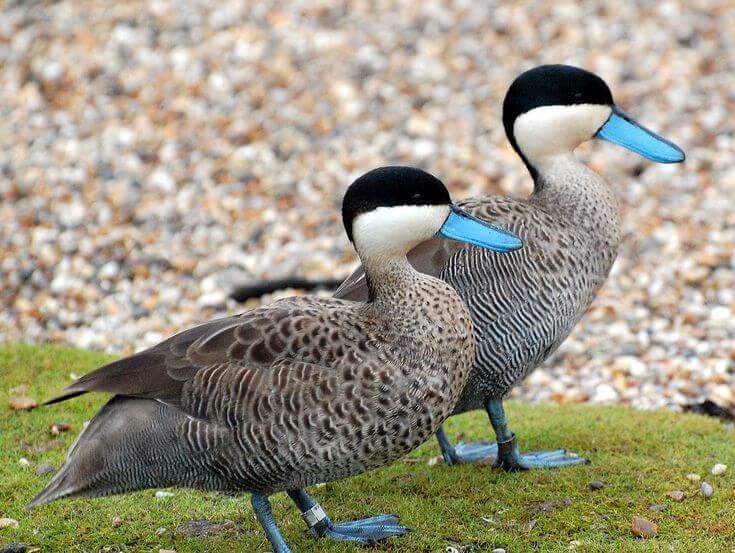Puna Teal

Scientific Name
Spatula puna
Alternative Names
None widely recognized; sometimes referred to as Andean Teal
Measurements
| Feature | Male | Female |
|---|---|---|
| Length | About 48 cm (19 in) | About 48 cm (19 in) |
| Weight | Around 600–700 g (1.3–1.5 lb) | Slightly lighter |
| Wingspan | Not well documented | — |
Status
Listed as Least Concern on the IUCN Red List. Populations are stable across the Andean regions of Peru, Bolivia, Chile, and Argentina.
Identification
A small dabbling duck with a striking light blue bill marked by a black line down the center. It has a black cap extending below the eyes, a creamy white neck and face, and light coffee-brown plumage with dark spotting. The tail coverts are gray, and the flanks are dark with fine stripes.
Voice
Quiet species; generally silent except for soft quacks and low whistles during breeding.
Diet
Feeds mainly on aquatic plants, seeds, and small invertebrates found in shallow lakes and pools of the high Andes.
Distribution
Resident in the Andes of Peru, western Bolivia, northern Chile, and northwestern Argentina, typically found at high altitudes on large lakes and ponds.
Habitat
Prefers high-altitude wetlands and freshwater lagoons in the altiplano region, often over 3,000 meters above sea level.
Breeding
Nests are made in long grass, sometimes away from water. Eggs are creamy pink, and both parents share the responsibility of rearing the ducklings—an uncommon trait among ducks. Breeding occurs mainly between April and June.
Wintering
Largely non-migratory but may move locally within the Andes to lower elevations when temperatures drop.
Conservation
Currently stable and not threatened, though dependent on the conservation of Andean wetlands that provide vital feeding and nesting areas.
